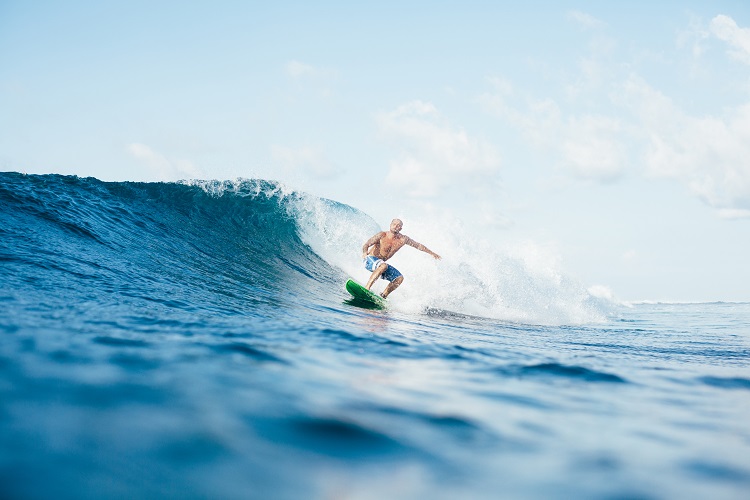Types of Waves to Practice Surf
24 Apr 2019 For venturavan. In Sin categoría Comments (0)
If you are a beginner, to start you can surf in medium waves and once you have some technique and experience you can face bigger waves, over 2 meters. Today we tell you about the parts, sizes and types of waves.
One thing to keep in mind is that to measure waves, international boating uses the Douglas scale, but here in the Canary Islands as in Hawaii, we measure the waves from behind. In the rest of Spain the waves are measured from the front, from the base of the water to the crest.
In short, the ways of measuring the waves will depend on the customs of the place where you go to surf.
Let’s see the parts that make up the waves
Hollow: parts of the wall of water and the arm of the wave that, thanks to its concave shape can pick up a lot of speed when passing through them.
Wall: part of the wave that rises and raises the water on the horizontal line, an area in which the takeoff is made just before it breaks.
Crest: area where the wave begins to break.
Lip: upper part of the wave that falls at the beginning and at the end of a wave, mixed with foam.
Arm: part of the wall that is surfeable.
Tube: water tunnel where you can spend surfing inside the wave. It is the wave most expected by surfers.
Impact zone: where the lip of the wave falls.
According to the shape of the waves, they have different names.
If they are raised creating a tube-shaped part they are called hollows, whereas if the tube is formed completely, the waves are called Tuberas.
To the waves that do not break hollow and form a lot of foam we call them Fofas and when the wave breaks closing the wall abruptly falling several wave sections at the same time, they are called Bar.
The best surf waves are those that evolve and break gradually. The development of the foam and the wall should be to the right or to the left. If the waves break near the shore they are called Orilleras.
The waves called Bar, are dangerous and not apt to surf, those that break on a rocky bottom with little depth are more suitable for the bodyboard.
Waves up to 1 meter are small, the most common to find. Up to 1.50 meters are average or normal waves.
From 2 meters to 2.50 meters, they are big and strong waves that allow to take tubes. And above 2.50 meters, they are giant waves.
Also, remember that the wind plays a decisive role that influences its shape and quality.
Now that you know more, you will get the most out of your sessions. To enjoy!





